How single-serve blenders are sending consumers in to a spin
THEY’VE been praised for “turning ordinary foods into superfoods” and changing the way we eat. But do these products actually live up to all the hype?
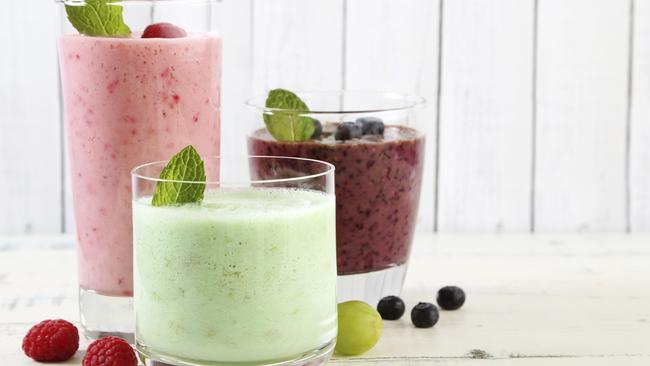
EXCLUSIVE
THEY are the kitchen gadget credited with turning “ordinary food into superfoods” and changing the way we eat, one blend at a time. Single-serve blenders are fast becoming a must-have for health-conscious consumers wanting a quick and easy way to get all the nutrition and vitamins fresh food has to offer.
Switch on any morning TV show, and you’ll be forced to submit to an advertorial for a one-cup wonder device promising to improve the way you consume fruit and veg.
They’re also hard to avoid during a trip down the aisle of your local department store.
“Personal blenders are predicted to be and will be in Target’s top selling list this December. The hero brand we sell is NutriBullet, which is always a favourite with customers,” a Target Australia spokesman said.
According to the NutriBullet homepage: “Nutrition extraction allows you to receive the highest degree of nutrition your food has to offer,” and their sales figures have skyrocketed since launching in Australia.
“The market size for liquid blenders was $7,487,000 in July 14. With NutriBullet launching, the market grew to a staggering $14,136,000. In August the market also grew $11,503,000 versus $6,156,000 in 2014 — so huge category growth experience with the launch of NutriBullet,” spokesman Marc Javis said.
These kitchen companions promise to break down the cell walls of fibrous plant foods and be the ultimate nutrition extractor. But, do personal blenders live up to their promises? And do you really need to pay top dollar to reap the benefits?
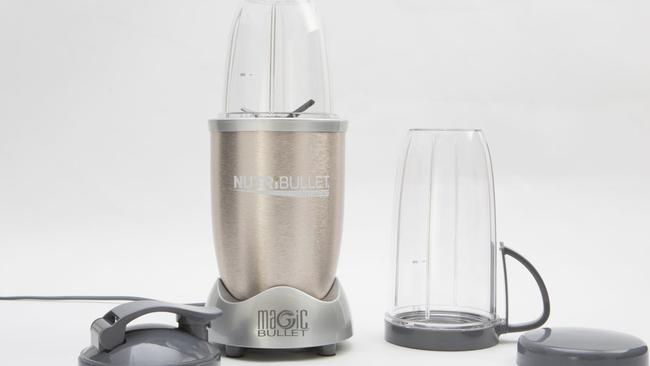
NUTRITIONAL CLAIMS QUESTIONED
Although blending and drinking smoothies certainly can be a great way to boost your plant food intake, nutritionist Dr Joanna McMillan questioned some of the messages personal blenders gave their consumers.
“In terms of unlocking more nutrients found in the plant cell walls, this does depend on how well you would normally chew and digest the plant food. We are very adept at doing this and so it’s not actually known as to whether blending is indeed allowing a greater release of these nutrients,” Dr McMillan said.
“I’m not sure I would not go as far as to say blending is better than eating the whole foods. Chewing and eating whole foods is equally important and making your gut work at digestion also uses kilojoules — it’s an important body process. However eating plant foods in different ways maximises our chances of getting a broad array of nutrients.”
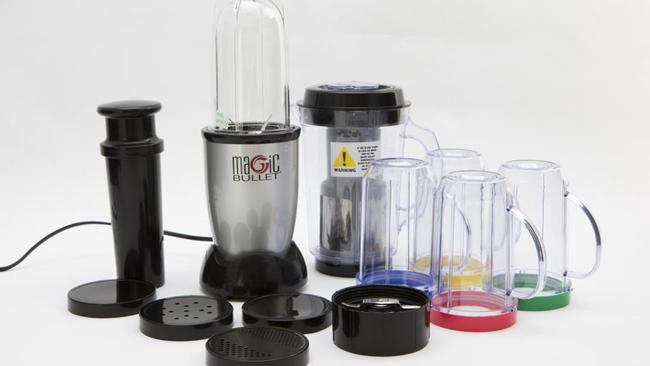
SHOULD I PAY TOP DOLLAR?
Convenient and compact, companies are jumping on board the blender bender. Celebrity chef Heston Blumenthal will have his Boss to Go Plus blender in stores next month, while historic household names such as Kambrook, Tefal and Sunbeam all have their fusions.
But with more than 20 devices claiming to be the revolution in personal blenders, selecting the right fit has sent consumers in to a spin.
Choice Magazinedelved in to the blender war by testing which devices lived up to their nutritional claims, and revealed why the most expensive units aren’t necessarily the best.
“When it comes to blenders, a high price tag is no guarantee of performance. While the Nutri Infusion has a hefty price tag of $345, its nutrient score is well below the NutriBullet Pro, which is over $100 cheaper,” Choice spokesman Tom Godfrey said.
Comparing 15 of the market’s most popular devices, the study involved blending the same ingredients (cucumber, celery, kiwifruit, pear, spinach, mint leaves and water) in each blender, and sending samples off for testing.
Calcium, iron, magnesium and vitamin C were examined and compared for nutritional value. Of the most popular blenders — NutriBullet, Nutri Ninja and Nutri Fusion — the results were similar.
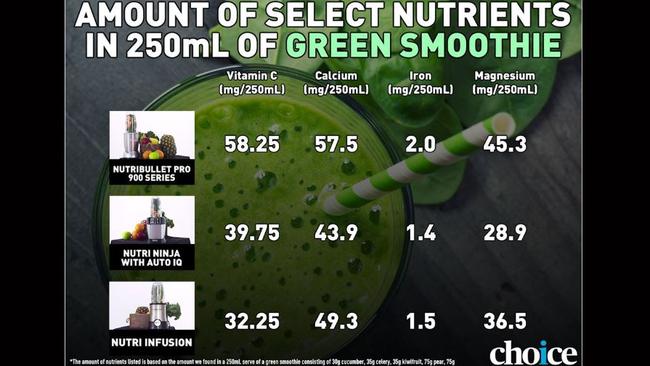
“While the NutriBullet’s micronutrients are higher, overall the numbers are not that significantly different when it comes to overall nutritional intake,” dietitian Susie Burrell said.
Looking at the nutritional comparison, the RDI of calcium for an average adult 1000mg, so 57mg produced by the NutriBullet vs. 49mg by Nutri Fusion is not that concerning.
”More to the point is that blended drinks, including smoothies, can offer far too many calories courtesy of dairy, fruit, nuts seeds and oils which can add up to give 500-600cal in a single drink,” Susie said.
The analysis of the personal blenders went further than understanding the nutritional benefits. In terms of cost, performance and ease-of-use, the study showed that consumers won’t necessarily get more for paying top dollar.
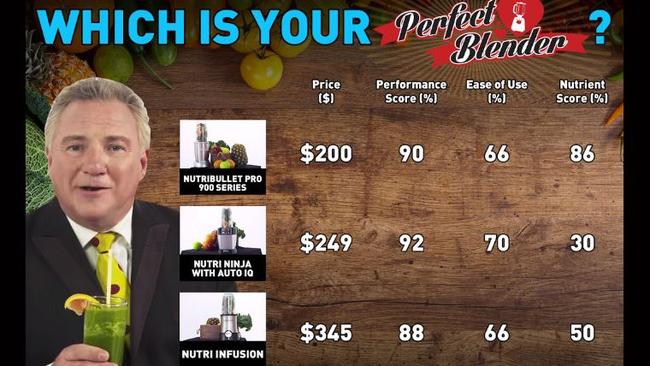
“For all the over-the-top salesmen and outlandish claims, you need to cut through the hype and buy a blender that suits your intended use. The NutriBullet Pro, Nutri Infusion and Nutri Ninja are some of the more powerful blenders we tested and are capable of blending the tough leafy greens and frozen fruits but if you want one for soft fruit smoothies the cheap bottle type ones are fine,” Mr Godfrey said.
The full CHOICE analysis on personal blenders is available here.




